Israel-Hamas War: What happened on day 110?
IDF launches western Khan Yunis push • 21 soldiers killed in one incident as Israeli suffers highest casualties in one day since October 7
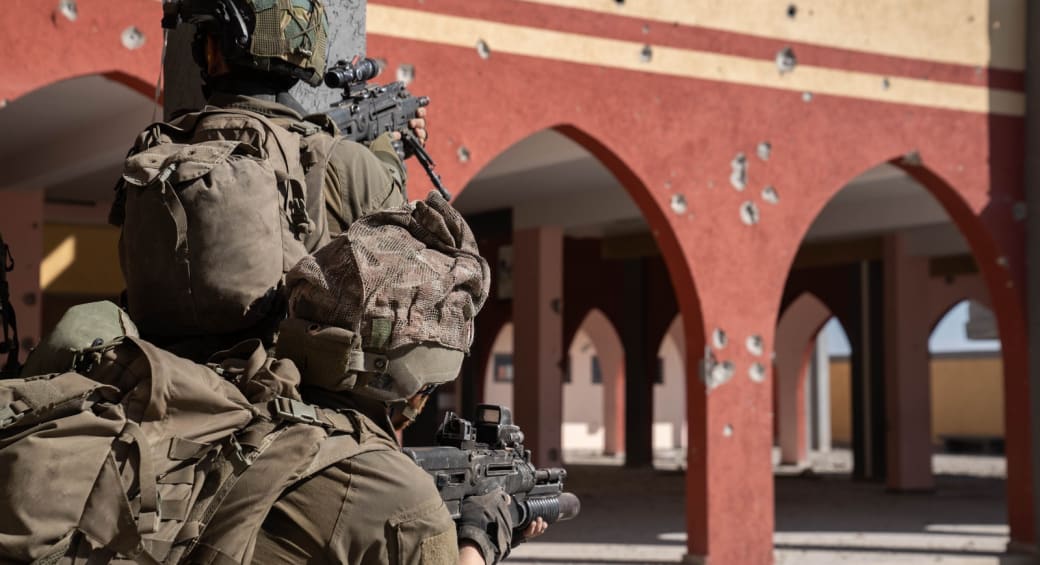
Major South African banks provide platform to fund Hamas
The Jerusalem Post research uncovered what appears to be a network of several South African organizations deeply involved in Hamas funding.

Research conducted by The Jerusalem Post staff and several sources uncovered what appears to be a network of several South African organizations and straw man companies deeply involved with funding Hamas activities through the Al-Quds Foundation, an international group sanctioned by the US and outlawed by Israel, using accounts registered in major local South African banks: Standard Bank, Nedbank, and Absa.
The global Al-Quds Foundation
The Al-Quds International Foundation (a.k.a. Al-Quds International Institute or QII) was established in Beirut in 2001 by Hamas members to raise funds for the terror organization through the guise of charity. According to the US Department of Treasury, the Hamas leadership runs all of the foundation’s affairs through Hamas members who serve on the board and other administrative committees, while all documents, plans, budgets, and projects are drafted by Hamas officials. Additionally, several senior Hamas officials, including Specially Designated Global Terrorists Mousa Abu Marzook and Osama Hamdan, served on Al-Quds’ Board of Trustees.
The foundation is part of the extensive network of Muslim Brotherhood affiliated organizations and was chaired until recently by sheikh Yusuf Al-Qaradawi, the most prominent Islamic scholar of the Sunni world in the past decades, who was also aligned with the Muslim Brotherhood axis, and who was made notorious in the West for his infamous fatwa (an Islamic legal ruling) endorsing, and commending suicide bombings.
Today, the foundation is headed by Sheikh Hamid bin Abdullah Al-Ahmar, a Yemeni businessman based in Turkey, who is a leading figure at the Al-Islah party in Yemen, which is a political tributary of the Muslim Brotherhood movement in the country.
The foundation was sanctioned by the US Department of Treasury back in 2012 for their “being controlled by and acting on behalf of Hamas,” with sanctions including the freezing of any assets held by the foundation under US jurisdiction, and the barring of on all US citizens from engaging in transactions with it. Israel also outlawed the foundation as early as 2009 for similar reasons.
Activities and covers in South Africa
Sanctioning by the US and Israel notwithstanding, the foundation continues its operations across the globe, featuring roughly thirteen branches in different countries, sometimes holding different names. In South Africa, a registered organization named “Al-Quds Foundation SA” also exists which openly admits on their new website that they are “a branch of Al-Quds foundation with headquarters in Lebanon.”
The organization itself boasts about its fundraising activities, claiming funds would be transferred to the needy in Gaza. The foundation’s website lists Sheikh Ebrahim Gabriels as its director, leading the South African branch since 2019.
Prior to that, Gabriels was the former president of the Muslim Judicial Council of South Africa (MJC), and of the United Ulama Council of South Africa (UUCSA). According to the Meir Amit Intelligence and Terrorism Information Center, MJC forms part of the Union of Good, an umbrella organization comprised of over 50 alleged charity organizations worldwide which engage in fundraising and funding for Hamas activities, also designated as a terror group under US law since 2008.
In 2017, Gabriels met with a Hamas delegation led by members of the Hamas political bureau Mohammad Nazzal and Maher Obeid. He also met with Hamas leader Ismail Haniyeh in Gaza in 2011 after joining the flotilla journey to Gaza.
Additionally, in 2008, he visited Israel and met with leader of the Muslim affiliated Islamic Movement’s Northern Branch, Raed Salah. In other instances, he could be spotted in pictures in Beirut (2016) and in South Africa (2014) alongside QII leadership.
Moreover, in 2022 Gabriels published a picture of himself with Sheikh Yusuf al-Qaradawi and Nelson Mandela, alongside a short obituary to Qaradawi, reading: “One of the greatest scholars of our era Sh[eikh] Yusuf al-Qardawi has passed on.” The two met during Qaradawi’s visit to South Africa in 2010, where Gabriels was among those who welcomed Qaradawi upon landing.
Using a proxy to bypass problems
Nevertheless, the South African chapter of the Al-Quds Foundation appears to have been faced with a sort of roadblock when it comes to transferring funds to Hamas, a source said. Reaching out to a contact within the foundation, the speaker commented that there were “some problems” with Al-Quds Foundation’s bank account registered in Absa bank, and so to accept funds from abroad, they used an account belonging to another group, named the Baitul Maqdis Foundation instead.
This organizational cover is further reinforced by a poster from October 2023 showing banking details for a donation to Al-Quds Foundation SA, which uses a Standard Bank account by the name of Baitul Maqdis, and according to sources, processes transfers in US Dollars as well as South African Rands:
The Baitul Maqdis Foundation claims to be a registered NPO. However, no organization by that name or number was found on official records, and its name appears virtually nowhere in an online search, except for an nearly blank Facebook page. Additionally, no information could be found regarding the founders, workers, or board members.
In addition to the Standard Bank account appearing above, Baitul Maqdis also owns a bank account in Nedbank, which they also use, as a source verified, for the sake of transferring funds from abroad to Al-Quds Foundation South Africa.
In their short Facebook presence, Baitul Maqdis has spread antisemitic and ahistorical conspiracy theories, such as blaming Jewish extremists for a Christian pilgrim’s attempt to set fire to the Al-Aqsa Mosque in 1969, and attributing false quotes to Israeli leaders regarding alleged schemes in Jerusalem.
It is worth mentioning that the name Baitul Maqdis (or Bayt Al-Maqdis) is another traditional Islamic name for Jerusalem, alongside the more well-known Al-Quds. This means that both organizations refer to themselves as the Jerusalem Foundation by a rough translation.
In other words, the dubious Baitul Maqdis Foundation provides a cover for the Al-Quds Foundation in their efforts to transfer funds to Hamas through their accounts in Standard Bank and Nedbank – instead of through their Absa account, which they admit faced some “problems.”
It is worth mentioning that all three banks are ranked within the top four banks in South Africa in terms of assets, with Standard Bank topping the list with roughly $170,000 million worth in offices, collaborations and shares in banks in the UK, Argentina, Turkey, and all across the continent of Africa.
A source said that the aforementioned Sheikh Hamid al-Ahmar is responsible for the entire operation of transactions from South Africa to the Lebanese hub of the Hamas-affiliated group. He is a prominent businessman from Sanaa, Yemen. On his personal website, he mentioned that he has served as owner of the Saba’ Islamic Bank and Yemeni telecommunications group Sabafon, was the vice president of the Arab tourism company in the Gulf and Yemen areas, a member of the Oil and Development Committee at the Yemeni Parliament, and even Finland’s Honorary Consul General in Yemen.
Al-Ahmar is a staunch supporter of terror groups. On October 8, one day after the Hamas massacre, he called upon the Houthis in Yemen to provide assistance to Palestinians and “turn statements into an act of support for the struggle and sacrifices of the Palestinian people.” Further, in 2006, he reportedly congratulated Hamas for its victory in Gaza in the Palestinian elections and donated $1,000,000 to a joint Palestinian-Yemeni company on that occasion
He also enjoys strong ties to the Hamas leadership: in 2013, he hosted a Hamas delegation led by Osama Hamdan, a leading figure in the Hamas political bureau, on the occasion of his children’s weddings. Additionally, in September 2021, Hamas leader Haniyeh delivered a eulogy for Al-Ahmar’s brother following the latter’s passing, and Haniyeh and Al-Ahmar were featured in several photos together over the years.
A Nedbank spokesperson responded to the Post's inquiry, "Nedbank has a comprehensive risk management and compliance program which is aligned with international standards to combat money laundering, terrorist financing, and proliferation financing. We strictly adhere to sanctions and related legislation and are confident that our risk management controls and reporting obligations are robust. Should we become aware of any Illegal or suspicious activity in client accounts, we would not hesitate to take the necessary actions in terms of our processes and in line with the relevant legislation.
Due to banker-client confidentiality, Nedbank is not at liberty to confirm whether or not the aforementioned is a Nedbank client, nor can it comment on any client details or accounts."
Go to the full article >>Erdan to UN: The Middle East is fighting a cancer
Erdan called out hypocrisy from his colleagues at the United Nations and noted that Hamas is continuing to plan attacks.
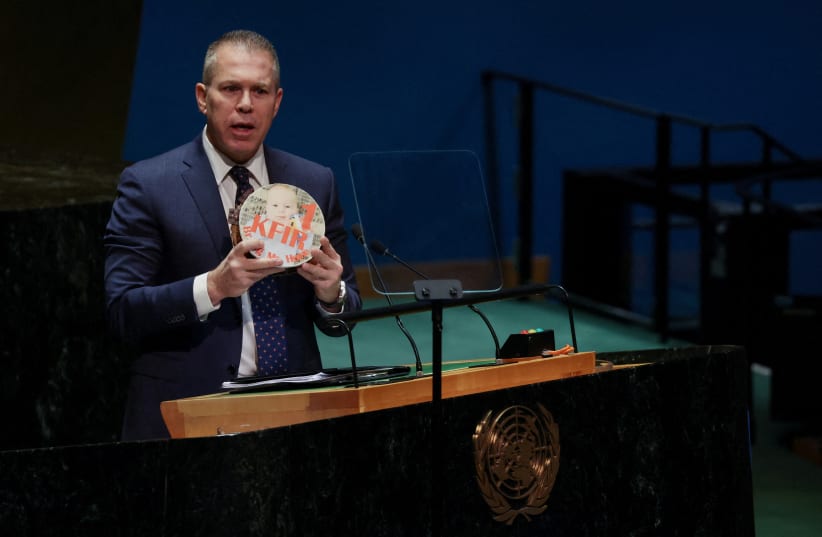
Israel's Ambassador to the United Nations Gilad Erdan addressed the United Nations Security Council on Tuesday, calling for the council to address the "cancer" in Gaza, and the immediate threats caused by the Hamas terror organization.
In his remarks, Erdan pointed out hypocritical moves from the United Nations and complete and total silence from the organization on their complicity and knowledge of Hamas' activities within the Gaza Strip. "We live in a backwards world. Eighteen years ago, Israel fully withdrew from Gaza in hopes to build trust with the Palestinians and chart a path towards a joint future," he said.
"Instead, the Palestinians voted in the Hamas terror organization, and since then, under the UN’s nose and its agencies, Hamas has exploited international aid and turned Gaza into the war machine that it is."
Was the UN aware of Hamas's terror tunnel construction?
He noted the hundreds of miles of terror tunnels that Hamas built with critical infrastructure and aid donations. He also reminded the council of Hamas's clearly communicated genocidal goals against Israel and the Jewish people. "The world knew this. The UN knew this," he stated.
Erdan also reminded the 15-member Security Council that the IDF withdrew from Gaza in 2005. He noted that their comments did not address the threat Hamas poses to Israel from Gaza, given that it has promised to repeat the October 7 attack in which terrorists killed 1,200 people in the southern part of the country and seized another 240 as hostages. Close to four months later, some 132 hostages are still being held in Gaza.

Erdan asked the Council what would happen if there was a ceasefire before the IDF destroyed Hamas. He answered his own question by explaining that it would regroup, rearm, and attack again.
“How can you call for a ceasefire and mention a solution to the conflict at the same time? This is a complete oxymoron. You cannot have both; it’s impossible. Hamas seeks to annihilate Israel. If you support a position that leaves Hamas in power, you cannot pretend to wish for a solution to the conflict,” Erdan said.
Erdan also reminded the council that Israel did not start the war they are fighting - but that the state of Israel would defend its safety and future, "just as each of you would defend the future of your countr[ies]."
Erdan also publicly noted Iran's presence and role at the security council, calling the move absurd.
"Hamas and the Palestinian Islamic Jihad are vile terrorists, but these forces of terror are a mere symptom of the true security threat in the region and beyond. There is a regime responsible for sponsoring 90% of Hamas’ terror budget, as well as arming them and training them. This is the same regime that supplies Hezbollah with precision missiles and provides the Houthis with ballistic missiles."
"All this is carried out in order to wreak havoc and instability in the Middle East, and soon these acts of terror will be carried out under a nuclear umbrella. Yet the Council basically ignores this enormous threat. The threat that is the Ayatollah Regime of Iran. How absurd is it that the Foreign Minister of the number 1 state sponsor of terrorism that aspires to destabilize the Middle East is here today to address the Council?"
Israel's Ambassador to the United Nations compared Iran's presence at the meeting to Hitler's Foreign Minister being part of a "serious discussion on how to defend Jews during the Holocaust."
Tovah Lazaroff contributed to this report.
Go to the full article >>How is the IDF preventing Palestinians from returning to northern Gaza?
Hamas has been trying to pressure Palestinian civilians to return to northern Gaza without surrendering or returning the around 130 Israeli hostages it is holding.
The IDF has disclosed more information about how it is preventing Palestinian civilians from returning to northern Gaza from southern Gaza, pending a resolution of the war and the hostage situation.
IDF Brigade 646 has recently been involved in assisting with this mission.
Hamas has been trying to pressure Palestinian civilians to return to northern Gaza without surrendering or returning the around 130 Israeli hostages it is holding.
When a group of civilians, say around 30, including children, start gathering to move toward the crossover point near the Gaza River, the IDF fires white smoke to discourage them from approaching.
Usually, this tactic works, but if some of the civilians continue to approach, then the IDF will shoot live fire warning shots in the air and on the ground nearby to deter the civilians.
There have been a very small number of civilians who continued past this point, such that it has been easy to arrest them and then send them back south.
In contrast, if someone presenting a danger approaches the crossover point, IDF soldiers are authorized, after trying warning shots, to also fire at the person's legs.
To date, Brigade 646 has been successful in preventing Palestinian civilians from returning, and the IDF has also blocked Hamas from trying to reestablish itself more generally in central or northern Gaza.
The same Brigade 646 last week exploded key pass-over points that Hamas had been using in tunnels to get past the Gaza River.
Tunnel discovered only one kilometer from Israel border
Working together with the Yahalom Unit, they were able to destroy the related tunnel network as well, which was only one-and-a-half kilometers from the border with Israel.
The key tunnel was one kilometer long, and it reached a depth of 20 meters.
During the elimination of the tunnel, the IDF also found and seized Hamas rockets, including some platforms hidden in the ground or in bushes.
Go to the full article >>Director of UNRWA affairs in Gaza: UNRWA center hit, mass casualties

An UNRWA training center sheltering tens of thousands of displaced people has been hit on Wednesday with buildings ablaze and mass casualties, Thomas White, the Director of UNRWA Affairs in Gaza said on X.
"Safe access to/from the center has been denied for two days, people are trapped," he added.
Go to the full article >>After months in 'foreign terrain,' IDF's Kfir exits Gaza, returns to civilian life
It was the first time the brigade had been mobilized to Gaza since it was established.

Major Meytar Shilon, a 27-year-old Company Commander in the Kfir Brigade, is now readjusting to civilian life. His brigade is one of several that was pulled out of Gaza in recent days, after spending the better part of over two months fighting in the Strip.
A third-year law student, he, like many other Israelis, was called up to duty following the October 7 attack by Hamas against Israeli civilians.
"This is our first mobilization to Gaza since this brigade was established. It took 19 years and 9 years for me personally as an officer, so this is very significant," Shilon told The Jerusalem Post after exiting Gaza.
At the onset of the war, Shilon's unit was serving in Sajaiya in the Northern Gaza Strip, a site of intense clashes.
"We were fighting an enemy above and below ground - killing terrorists, destroying terror infrastructure and tunnels in collaboration with other special forces," he said.
"A cowardly enemy that emerged from tunnels," ambushes, and booby traps
Shilon recounted the initial days of fighting and said that his soldiers spent the first few days familiarizing themselves with the difficult and crowded urban neighborhood of Sajaiya.
"We arrived with limited knowledge of the terrain, into very intense fighting in dense neighbourhoods and residential areas where terrorists were hiding," he said. "We encountered a cowardly enemy that emerged from tunnels underground for short periods of time and tried to harm us with ambushes and booby traps and then would either try to run away or run back underground."
Shilon described one of the "more significant events" during his service in Sajaiya, when his unit encountered a Hamas terrorist cell.
"We encountered five terrorists and engaged in an intense battle," he said. "With the help of the air force and tanks we were able to eventually eliminate this cell."
He also addressed the massive amounts of weapons, missiles, missile launchers and more that his unit uncovered.
"One of the most incredible stories - and I mean in a bad way - is that we entered an elementary school in Sajaiya. We entered the school to clear it of enemies and what we found was a tunnel right next to the school,” he said. “ We entered the tunnel and were immediately attacked by explosive devices.”
"You can see a classroom with birthday signs for the kids and right alongside massive explosives that are being used against our soldiers," he said. "You see just how they take an innocent structure like an elementary school meant to teach kids until 6th grade and they turn it into a fighting base for a brutal enemy that cynically uses schools and children."
Shilon said this was just one example, and there were many more.
"In another school in Sajaiya we found an incredible amount of ammunition being stored – from anti-tank missiles to weapons, really anything you can imagine - we found it inside the school."
After over a month in Sajaiya the brigade was allowed leave for four days before being redeployed to the Hamas stronghold of Khan Younis in the Southern Strip.
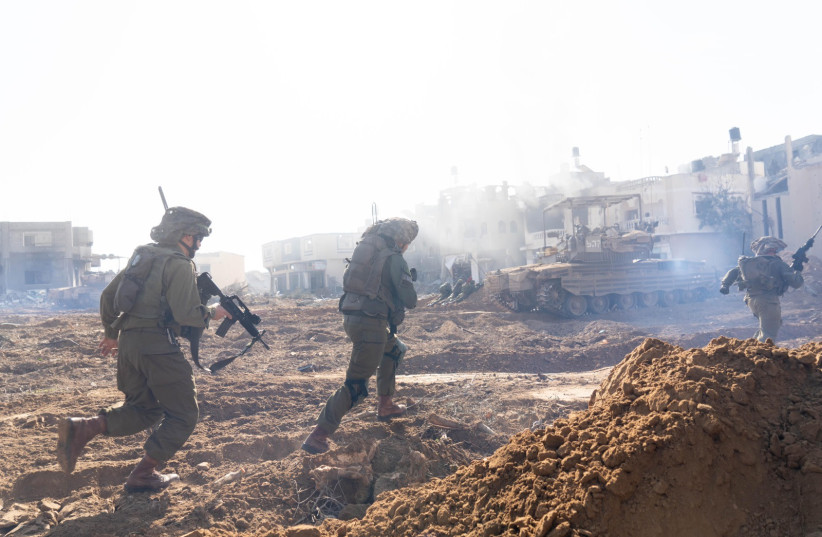
In Khan Younis, better-known terrain, but a more organized enemy
"When we returned to Khan Younis, we saw how the soldiers better understood the terrain and the enemy," he said. "Every area has its own difficulties - while Sajaiya was denser, Khan Younis had more structure, bigger neighborhoods, with high residential buildings. We had to adapt our strategy to act."
“We also saw that the enemy was much more organized here,” he said.
Indeed, Defense Minister Yoav Gallant has said that the IDF believes Hamas leadership is hiding in or under Khan Younis – one of Hamas’s main strongholds.
"The fighting more closely resembled that of Sajaiya after the first few days," Shilon said. "Still in both areas we saw the same cowardly enemy emerging from underground tunnels like mice."
Yet, in Khan Younis Shilon’s brigade suffered a tragic loss. One of his soldiers, 19-year-old Sergeant Roi Tal, fell in battle.
“Roi was the first to enter a room of a house where a terrorist was hiding and he was killed,” he said.
The loss, while tragic and difficult, did not deter Shilon or his soldiers from continuing their mission.
“Throughout all our tour, throughout all the fighting, our unit was exceptional and professional," he said. "This was our first deployment to Gaza, and we feel we are ready for any assignment in the future whether going back to Gaza, or in the West Bank or the North."
“Nobody wants war, but this war is a just war. We are fighting so that every Jew in the world knows he has a safe place in Israel in any stage of his life. This is our mission, and we have every intention to complete it successfully,” he added.
Go to the full article >>'We are more united and determined than ever' - Gantz addresses public on war, hostages
"Returning the hostages is not just a goal on the timeline of the war but a moral duty of the state," Gantz said.
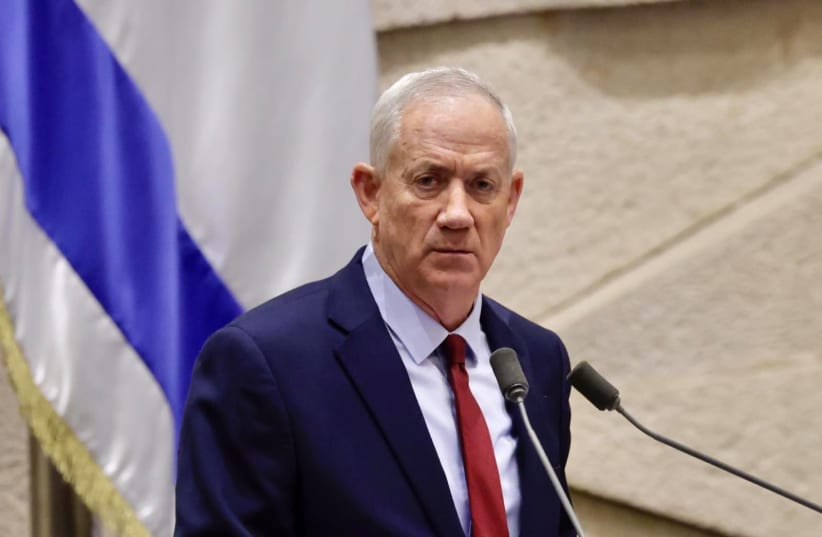
"We are more united and determined than ever," said Leader of the National Unity party and member of the security cabinet Benny Gantz during a televised address to the Israeli public on Wednesday.
He began his statement by addressing the deadly incidents in Gaza on Tuesday, resulting in 24 killed soldiers. "The map of bereaved families of the state of Israel was painted yesterday with an additional 24 instances proving the cost of existence and the strength of an army that comes from the people. Our responsibility is to ensure that their sacrifices don't leave us with waves of memory but of action," he said. "May the lesson to those who hurt us be that we are more united and more determined than ever."
He also addressed IDF activity in Gaza and the state of the war overall.
"The IDF has finished encircling Khan Yunis. This is not the only location we are fighting in, and it is definitely not the final destination. We have many more tasks and goals to achieve - in Gaza, the north, the West Bank, and other fronts. Every location that contains terrorists or terror infrastructure could be the next target. There is a lot of work ahead of us," he said.
"Over the last few days, we have witnessed a trend of leaks on the subject of the hostage release process outline that are tormenting the families and the nation and are harming the tremendous efforts that are being invested in the process," said Gantz, referring to rumors and news that was spread about potential hostage deal conditions.

"Returning the hostages is not just a goal on the timeline of the war, but a moral duty of the state. This goal is urgent and doesn't conflict with the commitment to remove the unrelenting threat of Hamas. We will never give up this goal."
Returning the hostages will require difficult decisions from the cabinet
He continued, "The desire to return the hostages alive is a source of strength. It is part of what turns us into a vibrant and thriving society that is worth fighting for. I promise the families of the hostages and the entire public, just as we were able to make difficult decisions in the past, we will know how to make these difficult decisions in the future if there is a real outline on the table."
He ended by reiterating that, ultimately, the decision will come from the emergency government, and any proposal from another source should be disregarded.
"The ones responsible for this are the leaders, not news studios. the responsibility is ours and ours alone. This is the purpose of the emergency government - to make difficult decisions with public legitimacy. At this time, we will continue to fight and continue to pave the way in every route to bring our loved ones home."
Go to the full article >>Iran's President Raisi flies to Turkey for delayed Gaza talks
Iran’s official line is that the visit by Raisi is about economic and commercial issues and the Palestinian issue is only a close second in the discussions.
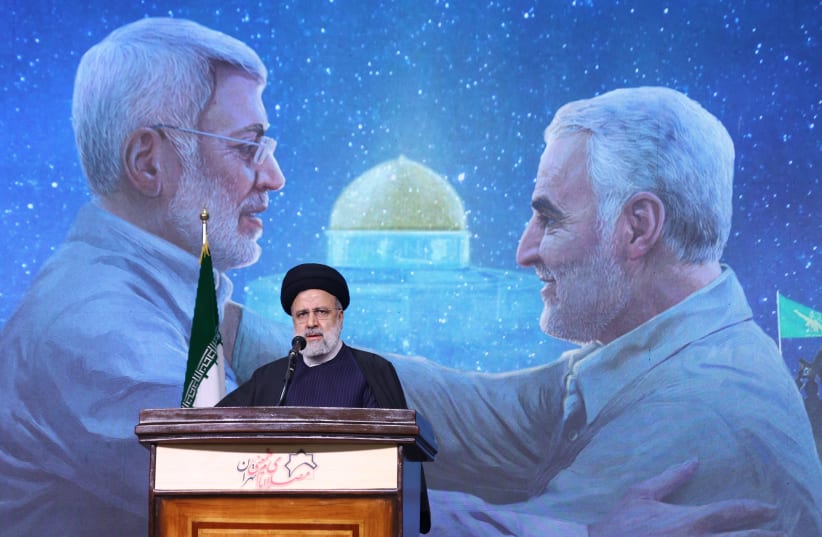
Iranian President Ebrahim Raisi flew to Turkey on Wednesday for key meetings with Turkey’s President Recep Tayyip Erdogan. Both countries oppose Israel’s war in Gaza and support Hamas, but their support is not identical.
Iran recently carried out missile attacks on northern Iraq and Pakistan, killing civilians, and has pushed its proxies to attack Israel and the US. By contrast, Turkey is more complex in how it backs Hamas; it has also recently carried out a bombing campaign in Syria, targeting the US-backed Syrian Democratic Forces (SDF).
Iran’s official line is that Raisi’s visit is about economic and commercial issues, while the Palestinian issue is only a close second. According to Iranian pro-government media, Raisi said that “Turkey, as a neighboring and Muslim country, is an important economic and commercial partner” for Iran.
Iran expects to sign several deals with Turkey but has also said that the Muslim world is concerned about the war in Gaza. “Iran and Turkey have a common position in supporting Palestine and the resistance of the oppressed and powerful Palestinian people,” Iran’s Fars News reported.
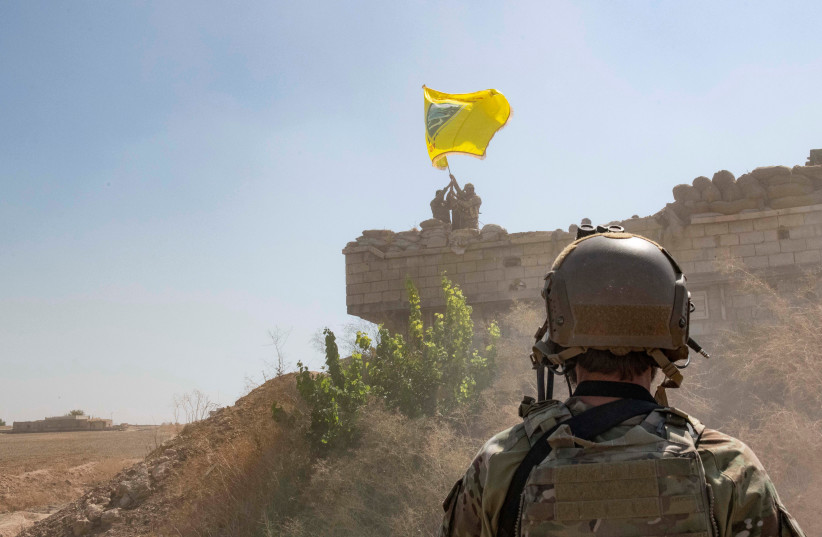
Iran, Turkey cooperating against US-backed SDF in Syria
Iran is convinced that Hamas will prevail, saying it wants to “cut off the vital arteries of the Zionist regime. Therefore,” Iran says, “the issue of Palestine will be one of the issues discussed between us and the president of Turkey,” implying that Iran wants to discuss trade between Turkey and Israel.
Overall, the agenda is also one in which Iran and Turkey seek to work together outside the orbit of the West. While the US praised Turkey for finally backing Sweden’s bid to join NATO, Ankara has increasingly been at odds with the West. Ankara’s foreign policy in the region often supports extremist groups and has sought to destabilize eastern Syria.
In eastern Syria, the US backs the SDF, which has suffered bombs by Iranian-backed militias, meaning, in essence, that Turkey and Iran cooperate against the US.
Turkey also operates in northern Iraq and Iran and recently carried out attacks on Erbil. However, in Iraq, the countries do not always agree. Turkey and the Kurdish KDP party in Erbil have good relations, while Iran has better relations with the Kurdish PUK party; Iran even murdered a key Kurdish businessman in Erbil along with his family.
Overall, Iran is seeking to shift its policies toward China, looking to work with Turkey on other organizations, like the Shanghai Cooperation Organization and BRICS, which Iran has joined.
How does Turkey see the coming meetings? The country’s Daily Sabah paper, which is pro-government, wrote that “the turmoil engulfing the Middle East since Israel went to war on Oct. 7 has added a new layer of complexity to Turkey’s close but uneasy relationship with Iran. Erdogan considers Iran-backed Hamas as legitimately elected liberators and not the “terrorist” organization it has been proscribed as across the Western world.”
The paper noted that Turkey’s leader has “compared Israeli Prime Minister Benjamin Netanyahu to Adolf Hitler for attacks that have killed more than 25,000 people – mostly women and children – in Gaza. Relentless Israeli attacks have also left much of the besieged Palestinian territory in ruins and starved of food.” In this sense, Ankara’s anti-Israel views are as strong as Iran’s today.
Go to the full article >>Israeli families of hostages, troops block aid convoys at Gaza border
If Israel halts aid to Gaza, nations mediating between Israel and Hamas would increase pressure on the terrorist organization, former National Security Council chief Giora Eiland argued.

Israeli protesters, including families of Gaza hostages and deployed IDF soldiers, made their way to the Kerem Shalom crossing, between Israel and the Strip, on Wednesday morning to demonstrate against aid trucks crossing the border into Gaza.
The Mothers of Combat Soldiers foundation announced that hundreds attempted to block convoys of aid entering the Gaza Strip, saying that they are doing so to "help our fighting sons come out victorious in Gaza.
"Any aid to Hamas must be conditioned with disarming its forces and returning all hostages," member of the organization Hana Giat, whose husband and two sons are fighting in Gaza, said. "We are here to block Hamas's logistical
Protesters were seen carrying signs reading, "humanitarian aid is killing IDF soldiers." This comes after IDF soldiers were pictured alongside graffiti on a Gaza wall, reading: "Humanitarian aid = coffins," last week. The IDF said the incident was being probed.
Protesters set up tents near the border, sending a message that they are prepared for a long stay and that "no aid goes through until the final hostage returns."
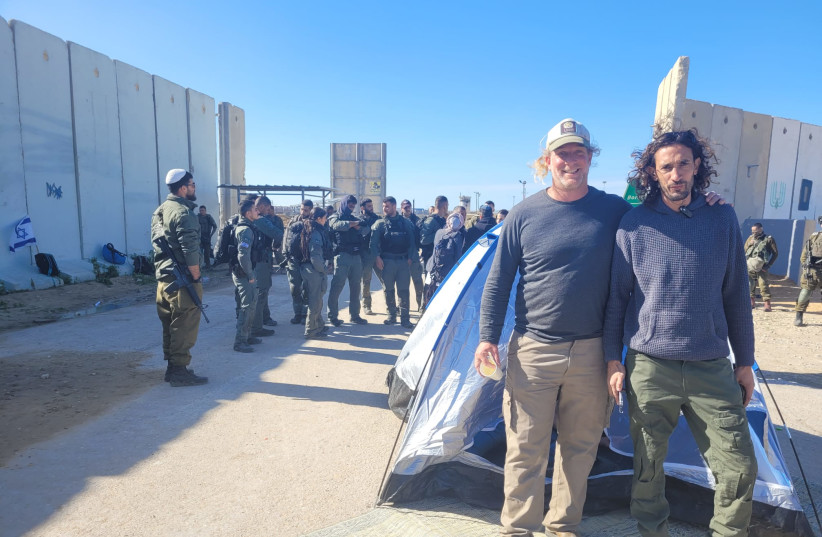
Former Israeli security chief calls to halt Gaza aid
If Israel halts aid to Gaza, nations mediating between Israel and Hamas would increase pressure on the terrorist organization, former National Security Council chief Giora Eiland told Maariv on Wednesday.
"After speaking with many sources, I am convinced no pressure is being put on the mediators," Eiland was quoted as saying. "If aid to Gaza stops, countries like Saudi Arabia, Qatar, and Egypt would be unnerved. They care about the Palestinians, therefore they will increase the pressure on Hamas.
"Currently, there is insufficient pressure on Hamas," Eiland analyzed. "Its members feel safe...we are those pushing for a hostage deal because their clock is ticking, while Hamas is not rushing to anything."
This is a developing story.
Go to the full article >>Israel's Mossad shuts down 'baseless lie' spread by Likud MK
Israel's Mossad intelligence agency shut down unfounded claims shared by Likud MK Tally Gotliv, claiming that the agency's director David Barnea received information that protest leader Shikma Bressler "communicated with Hamas leader Yahya Sinwar before October 7."
"The claim is a recycled falsehood," the Mossad said in a Wednesday statement issued through the Prime Minister's Office. "The Mossad head has never met, spoken to, or invited Shikma Bressler to a meeting.
"This is the second time MK Gotliv spread baseless lies," the statement added.
Go to the full article >>Doctors use a 3D printer to reconstruct IDF soldier's fractured knee
The IDF soldier, Shilo Segev, who has already begun restorative physiotherapy training in Hadassah's orthopedic department, said that he’s already seeing an improvement in functioning.
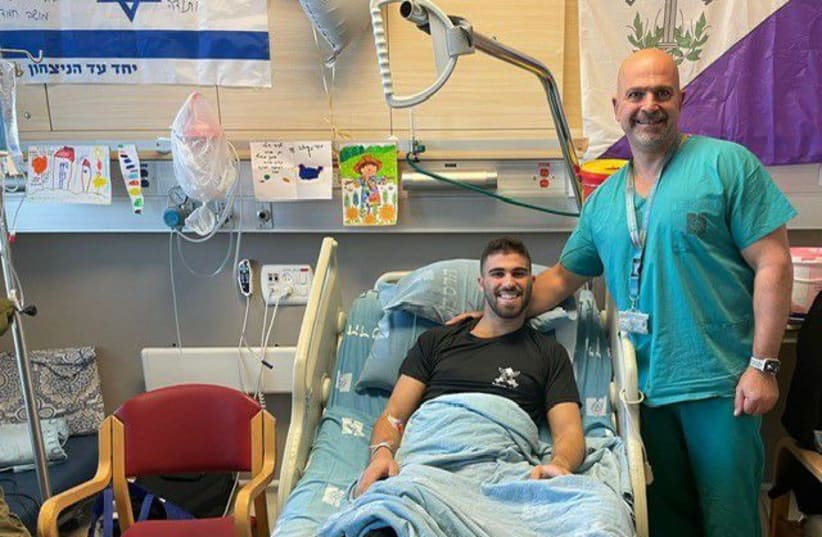
Shilo Segev, a 21-year-old soldier in the Givati Brigade and a cadet in the IDF’s officers’ school, was rushed to the Gaza border to help fight in the communities on October 7.
He was shot in the leg, and his knee was shattered as terrorists surrounded him on the ground and shot at him.
Fortunately, he was evacuated, and while undergoing advanced technology surgery at Hadassah-University Medical Center in Jerusalem’s Ein Kerem, his knee was reconstructed using a 3D-printed model in combination with taking bone from his pelvis to complete the shattered bone.
He has just been discharged from the hospital to undergo rehabilitation.
Since recovering from the orthopedic surgery, during which Segev recounted the shocking occurrence, he said: “I’m lucky to have come here into the hands of a professional team that understands bone restoration and reconstruction.”
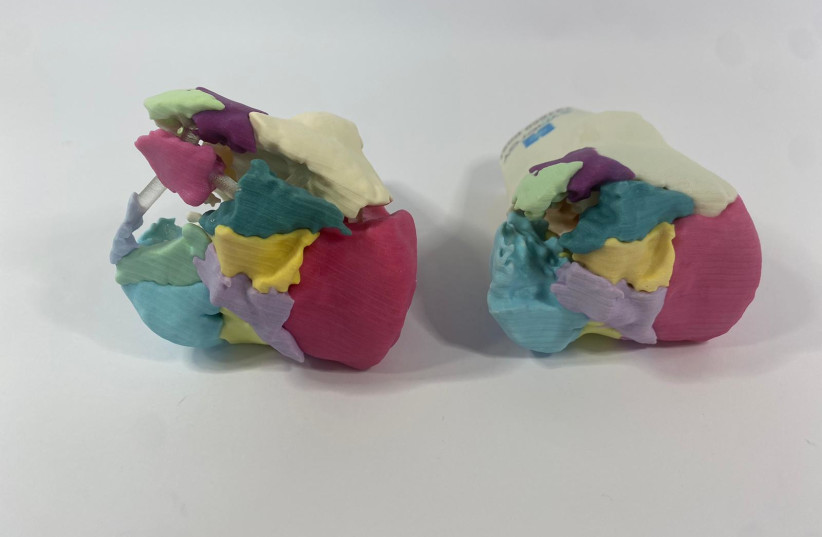
He recalled that “we spent Shabbat at the base, and early Saturday morning, we were whisked to the Gaza envelope communities. Like everyone else, we didn’t realize the magnitude of the incident at first.
Battles in Gaza
There were a lot of unclear issues at this point.” Segev and the other soldiers of the Gefen Battalion arrived in Ofakim and began to search the city. “Later, we reached Kissufim to help the forces fighting there.”
After fighting for about two weeks in the Gaza border communities and another month of training and certification in the Training Base, they entered the Gaza Strip, where they cleared houses and conducted many searches.
“We reached the Jabaliya neighborhood, where no IDF force had entered before us. The fighting there was more difficult because of the presence of a large civilian population, mixed in with terrorists.”
In the crowded and dangerous neighborhood, they reached a building they had to clear so the brigade could use it as a base for ambushing terrorists.
“We had to carry out the mission quietly and not wake up the neighborhood so they wouldn't know we were there,” Segev recalled.
He entered the building first, and the soldiers sensed something was wrong from the moment they entered. “We entered the building and couldn’t see anything. Everything was full of dust, and ropes were stretched from side to side, which aroused our suspicions.”
After he and his partner quietly searched the first floor, they went to the second. “I tried to open the door and felt a slight resistance. I identified a barrel that made it difficult to open the door. I received permission from my commander to start firing into the room, but immediately after a few seconds, the terrorists fired back at us. The bullets hit right next to us, and there were sparks and flashes of light.”
Segev’s partner was wounded, and while the team provided cover, they pulled themselves back and reached a narrow alley outside the building, which was when a barrage of shots began. “There were serious volleys of fire. My weapon took a bullet, and I couldn't shoot. At that point, I was shot in the leg and fell to the floor.”
While all the soldiers on the team ran for cover, he was left alone in the alley as the terrorists continued to fire at him. “I was alone in the middle of the alley and screamed that I’d been injured. When I realized that I was endangering others and they couldn't reach me, I started crawling backward to get out.”
After he managed to extricate himself, while his friends provided cover for him, he was evacuated by helicopter to Hadassah Hospital Ein Kerem. “I was conscious in the helicopter the whole way. My leg hurt terribly, and I thought I’d lost it, but all along, I felt like my hand was being held. My friends were with me until I got to the hospital.”
A complicated surgery
When he arrived at the hospital, emergency surgery was performed on him by Dr. Alona Katzir and Dr. Omer Or from the orthopedic department. The surgeons cleaned his wounds so that they would not become infected and fixed the fractures in a temporary external fixture.
Prof. Yoram Weil, director of the orthopedic trauma unit who later operated on Shilo again, recalled: “Shilo came to us with a very complex fracture in his right knee from the penetrating energy of the bullet that shattered the bones. After the initial surgery, he underwent major surgery to reconstruct the knee to restore maximum function later on. Given the crushing of the bones, it was a challenge.”
With the help of a dedicated 3D printer from the Israeli company Stratasys, the doctors built a model through which, during the operation, they saw what was missing in Shiloh's knee and could reconstruct the bones in the best way possible.
“The surgery was performed accurately and successfully,” Weil said. “After assembling the model in our 3D laboratory led by Synergy3Dmed, we saw that there was a lack of upper thigh bone, and using a three-dimensional pattern that we built, an appropriate size portion of bone was taken from the pelvis to fill in the blanks so as to create a reasonable reconstruction of the fracture.
The model helped us reconstruct the fracture and reach a very high level of accuracy and planning. Shilo is already using the knee well. He is supposed to undergo another operation, and within a few months, the fracture will heal, and he will be able to recover fully.”
Segev, who has already begun restorative physiotherapy training in Hadassah's orthopedic department, said that he’s already seeing an improvement in functioning and is eagerly waiting to start significant rehabilitation.
"I thought I might lose my leg, but luckily, the situation is completely different, and the leg is already improving. Luckily, I arrived here into the hands of a professional medical team that understands bone restoration and reconstruction. It’s crazy to think I could have ended up without a knee or with a crushed bone. From here, I have to finish the surgeries and get back to myself; that’s for sure what will happen.”
Go to the full article >>Israel-Hamas War: What you need to know
- Hamas launched a massive attack on October 7, with thousands of terrorists infiltrating from the Gaza border and taking some 240 hostages into Gaza
- Over 1,200 Israelis and foreign nationals were murdered, including over 350 in the Re'im music festival and hundreds of Israeli civilians across Gaza border communities
- 132 hostages remain in Gaza, IDF says